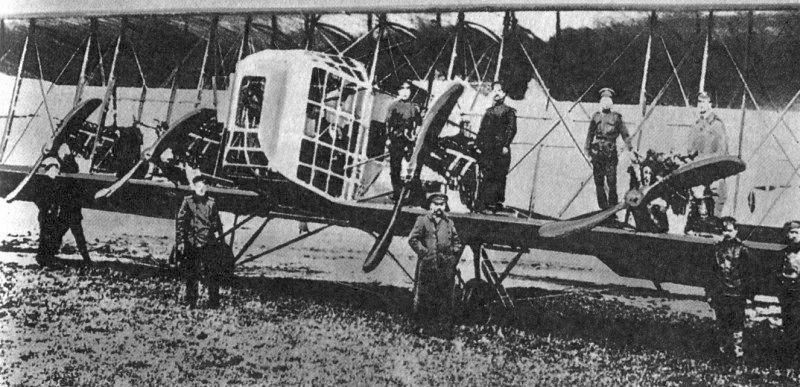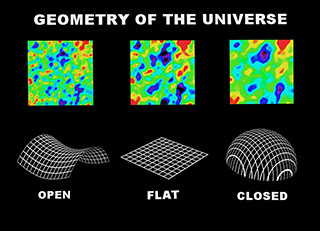Biography:
 |
| Fig.1 Alexander Friedmann |
Following a relatively ordinary childhood, Friedmann enrolled in highschool at the Second St. Petersburg Gymnasium in 1897. There his brilliance would become apparent as he quickly blossomed from his shell of normality and it was not long before Friedmann was gunning for the top spot against his soon-to-be best friend Yakov Tamarkin. Then in 1905, astonishingly Friedmann and Tamarkin submitted a paper on Bernoulli numbers for publication. A year later the paper was published and Friedmann and Tamarkin both began college life at the University of St. Petersburg [2]. By this point in time, Friedmann and Tamarkin were inseparable, working, studying and even striking together and eventually, upon meeting Paul Ehrenfest, they became the only two mathematicians to join Ehrenfest's Modern Physics Seminar group. There they discussed relativity, quantum theory and statistical analysis with Ehrenfest and a number of other younger physicists [1]. Throughout the course of his undergraduate studies in mathematics, Friedmann was heavily influenced by physicists such as Vladimir Steklov and Ehrenfest; this pushed him towards an interest in applied mathematics, particularly aeronautics.
   |
| Fig. 2 Yakov Tamarkin, Vladimir Steklov and Paul Ehrenfest |
After graduating in 1911, Friedmann immediately went on to attend graduate school for a masters in mathematics. This would prove to be a productive year for Friedmann; not only did he publish an article on the aeronautic contributions of Zhukovsky and Chaplygin, but he also joined an academic group, with Tamarkin, that studied the applied mathematics and analysis of mechanics [2]. Throughout the course of his masters degree, Friedmann continued to expand his areas of research, spreading from mathematics to aeronautics to the mechanics of fluids and meteorology [1] and as if he was not busy enough, he also lectured at the Mining Institute and Railway Engineering Institute [2]. Even with his varied research and massive workload, Friedmann concluded his masters degree in under two years and after graduating, was assigned a position with the Aerological Observatory in Pavlovsk. Surprisingly, given his more mathematical background, out of the topics he had researched at the university he was at the Observatory to study meteorology.
 |
| Fig. 3 Russian WWI Bomber |
Later that same year, Friedmann joined the Russian air force predominantly for his mathematical prowess and physics knowledge, however he was also trained to be a bomber pilot [1]. Unfortunately war broke out all over Europe the following year, the first World War. Initially, Friedmann continued his efforts in meteorology, and sought out its most prominant mind, Vilhelm Bjerknes, but as the war stretched on with no end in sight, Friedmann decided to contribute directly to the war effort. Friedmann worked in the field, putting his mathematical skills and physics knowledge to the test. As a bomber, his goal was to mathematically model the trajectory a bomb would taken under variable conditions. He worked on his model furiously, writing letters to his cohort Steklov, from his days at the University of Saint Petersburg and was eventually successful in accurately modeling the bomber attack on the city of Przemysl [2]. At the end of 1915, Friedmann left field work and began instructing, he taught pilots about aerodynamics along with his discoveries in trajectory modeling. He was so successful with this that less than a year later he was promoted to head of the Central Aeronautical Station. Friedmann's time in this position was not to last though, for the Central Aeronautical Station was shutdown in 1917 post Russian Revolution [1].
After the end of the war in 1918, Friedmann accepted a professorship at Perm University, where he studied theoretical mechanics, but left abruptly two years later when civil war broke out [1]. He ended up taking a position at the Main Geophysical Observatory [2]. While working at the observatory, Friedmann crossed paths with Einstein's General Theory of Relativity and was instantly enthralled; another two years later he produced a solution to Einstein's equations that supported a dynamic universe [1]. This was groundbreaking, but also incredibly controversial, up to this point the vast majority of the physics community believed in the static unchanging universe. Einstein himself, even altered his equations in 1917 with a cosmological constant to force them to work with a static universe model [3]. Friedmann eagerly shared his finding with Einstein, who was naturally skeptical. At the first sight of Friedmann's idea, Einstein was off put, describing the work as "suspicious" and replied to Friedmann with his criticisms. Friedmann however, was not to be discouraged, he immediately sent Einstein a copy of all of his work on the matter urging him to look through it. After a careful half year long review Einstein admitted that the results were all correct, but was still an adamant believer in the static universe, stating that Friedmann's results were not descriptive of reality, similar to how Copernicus' model of the solar system was stated to be a tool [2]. Due to Einsteins critique as well as the fact that Friedmann only published in Russian, he received minimal recognition for his idea [3].
Friedmann completed his Master's dissertation on compressable fluids in 1922 and in 1924 he published a paper on his three Friedmann Models of the Universe, expanding models that fell in line with his solution to Einsteins equations [2]. He was unable to finish his work, for a year later Friedmann died from typhoid fever at the young age of 37 [1].
One of Friedmann's specialisations, and the topic of his Master's degree was the mechanics of fluids. As a natural extension to this, Friedmann viewed the whole universe much like a vast expansive fluid. He envisioned the universe as an even distribution of "universe-ness", that any two random pieces of the universe (at a large enough scale) should be basically indistinguishable. Under this belief and applying his mathematical knowledge of fluids, in conjunction with Einsteins equations, Friedmann was able to create the general form of a dynamic universe as a solution to said equations. Unfortunately, he was missing some vital information involving the properties of this so called "universe-ness", he could envision the universe as a fluid, but there was no way to determine the pressure or density of this mystery fluid [4]. With this lack of information, his general solution proposed three possible types of dynamic universe that fit the model.
 |
| Fig. 4 Geometry of the Universe |
- A Flat Universe: this is the most intuitive type of universe, and the type that most people probably envision when thinking about the universe. In this model, the curvature of space is nonexistent and its maximum expansion is infinite, however it's rate of expansion tends to zero [5]. In other words, this is a sheet-like universe that experiences constant, decelerating expansion. Eventually this model would be debunked, as it is known that the expansion is accelerating.
- A Closed Universe: this type of universe is akin to blowing up and deflating a balloon repeatedly. It has spherical (positive) curvature and expands out to a maximum and then shrinks back down to an infinitesimally small point [5]. This is also one of the current theories of the end of the universe, a cyclical universe that is continually destroyed and recreated.
- An Open Universe: this type of universe has hyperbolic (negative) curvature and is the hardest to imagines. It can be thought of as the shape of a hyperbolic saddle furthermore, all that is known about the expansion of this kind of universe if that it is always nonzero and will converge to some unknown constant [5].
George Gamow, Student of Friedmann:
George Gamow was a Russian physicist and cosmologist who was born in 1904. He was a student to Friedmann and would go on to help continue Friedmann's legacy by contributing to George Lemaitres Big Bang Theory, which was one of two competing theories spawned from Friedmann's ideas. He specialized in radioactive decay and would eventually defect from Russia to move to America [6].
His work with the Big Bang Theory was truly exceptional, beginning with his assumption of the "hot universe", that the universe in its youth was incredibly hot. From there, he applied Friedmann and Lemaitres theories of the expanding universe as well as his speciality in radiation to make groundbreaking discoveries in the formation of the universe [6].
Works Cited:
- http://www.physicsoftheuniverse.com/scientists_friedmann.html
- http://www-history.mcs.st-and.ac.uk/Biographies/Friedmann.html
- http://www.decodedscience.com/alexander-friedmann-unsung-hero-of-modern-cosmology/19423
- http://www.brighthub.com/science/space/articles/79590.aspx
- http://www.einsteins-theory-of-relativity-4engineers.com/friedmann-equation.html
- http://en.wikipedia.org/wiki/George_Gamow
- http://upload.wikimedia.org/wikipedia/commons/c/ca/Alexander_Friedman.png
- http://apprendre-math.info/history/photos/Tamarkin.jpeg and http://upload.wikimedia.org/wikipedia/commons/thumb/b/b9/Steklov.jpg/220px-Steklov.jpg and http://upload.wikimedia.org/wikipedia/commons/8/8a/Paul_Ehrenfest.jpg
- http://www.wio.ru/ww1a/gal/im_e.jpg
- http://map.gsfc.nasa.gov/media/030639/030639_2_320.jpg
No comments:
Post a Comment